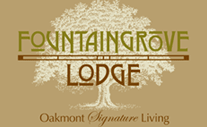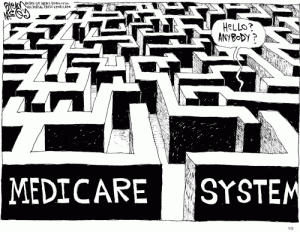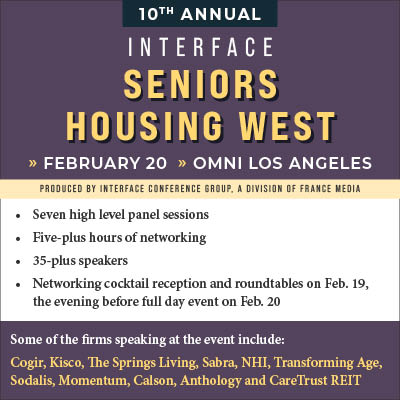By Jack Cumming
Sometimes, innovative concepts seem so obvious that you wonder why everyone doesn’t just jump on board. One familiar example is digital photography. Once digital devices appeared everywhere, it seemed obvious that film photography would not last. Still, Kodak was slow to change. In 2012, the company that brought the Brownie camera to the masses filed for bankruptcy. It’s now an iota of what it once was.
Avoiding Obsolescence
What happened to Kodak is instructive for senior living, especially not-for-profit senior living. It’s not that Kodak’s management didn’t see the digital potential. It’s just that Kodak was slow to adapt. They were followers, not innovators, so they stagnated and stalled and waited to act as digital-first competitors stole the opportunity.
Turning to senior living, imagine a community in which residents purchase their homes and become equal voting members in the not-for-profit corporation. That can seem alarming to some managers of today’s not-for-profit communities, many of which have no members or have a single corporate member. It can be hard to imagine letting residents have control. Still, the marketing appeal of empowerment is obvious. One can even conceive of an advisory firm helping such self-sufficient enterprises to get off the ground and to manage operations once they are established.
The Future-Residents Club
Could resident empowerment be to centrally controlled senior housing what digital was to photography? An unanticipated benefit is the unleashing of the talent among residents to help improve the services provided.
At one such community, there is a future-residents club. That “club” is indicative of the kinds of innovative living that result when residents are freed from overweening governance. In this simple club example, a concept that many senior living marketing executives adopt is taken to a much higher level because of the innovative empowerment of residents.
At Beaumont, a not-for-profit cooperative community in Bryn Mawr, Pennsylvania, some resident members jokingly refer to the Future Residents Club as “retirement light.” That’s because “future residents” can enjoy so many community events and amenities without being a resident.
Future residents receive priority notice of available units and have the comfort of knowing that a welcoming community awaits them when they’re ready. If that sounds like a waiting list, it is, though in this case it’s more than a marketing ploy. A 100% refundable membership fee sure sounds better than a “waiting list deposit.”
Beaumont is the not-for-profit cooperative community that I have studied the most. It’s not alone, though. It has a sister community nearby at Springton Lake Village in Media, Pennsylvania, and the Highlands in Topsham, Maine, offers a cooperative living option within a more conventional continuing care community.
Managing a resident-centered senior community is not so different from the industry norm. Joe Peduzzi, president and CEO at Beaumont at Bryn Mawr, was previously an executive director for Front Porch, a California multifacility, not-for-profit conglomerate.
Mr. Peduzzi describes the difference from his prior experience this way: “Beaumont’s management is not an out-sourced or corporate function … my managers and I work directly for and with Beaumont’s resident-owners to ensure that they consistently receive the quality services and care they expect.” Isn’t that what most people working in senior living want?
Challenges to Change
If shifting from concentrated ownership to a democratic model is appealing, there are several things to consider. First, it’s easier for new residents in an established cooperative to understand the limitations of what is possible. Still, not all such undertakings will be new communities. Some existing not-for-profits may want to convert. Such conversion, though, presents a challenge. Residents who have adopted the attitude of tenants toward landlords may find it difficult to adapt to ownership.
Of course, the conversion can be gradual, with ownership targeted for new residents only as apartments or villas become available. Still, with cooperative governance, it’s best if residents don’t try to micromanage executive leadership. That requires careful crafting by expert attorneys of the transition documents. It also requires consumer education. If the sponsoring not-for-profit owner stays on as managing agent, a big part of the sponsor’s responsibility will be to help with that education.
Pricing
Pricing can also become an issue. As we generally think of home ownership, it not only provides freedom and security, but it also offers speculation that prices will rise. While foreclosures demonstrate that such speculation is not always positive, the expectation of appreciation is a widespread part of the American Dream.
As a principle with senior living, less volatile pricing may be considered desirable. Beaumont, for example, limits speculation by constraining resale prices according to a formula. “Prices for homes at Beaumont are guided by an IRS formula for non-profit communities.” While the formula does allow for appreciation, it’s formulaic rather than speculative.
Lastly, there’s the question of residential turnover at death or relocation. The cooperative form facilitates turnover since the right of occupancy terminates with death or vacancy. That avoids the situation with some condominium structures in which transfers may be tied up in estate settlements.
What of Age?
Under the IRS guidance, any development “which devotes its resources to the operation of a home for the aged will qualify for charitable status for purposes of Federal tax law if it operates in a manner designed to satisfy the three primary needs of aged persons. These are the need for housing, the need for health care, and the need for financial security.” Moreover, “… there is no ruling or regulation that specifically states that tax-exempt elderly housing projects are restricted to only those aged 65 or older or 62 or older, etc.” [IRS, TEGE, EOTopic04]. Consequently, operators and developers may want to consider whether today’s age restrictions are needed or desirable.
Giving a Future Residents Club substance beyond a “waiting list” can help feed prospects into a particular community. Beyond that, innovative concepts for ownership and governance may help overcome recurring prospect objections to congregate housing. Lastly, even though a community may be oriented toward older prospects, eliminating age as more than a natural affinity characteristic may make moving to an elder community feel less like a life sentence. Experimenting with thinking beyond the norm has the potential to greatly increase the senior living industry’s market share of elder housing.








